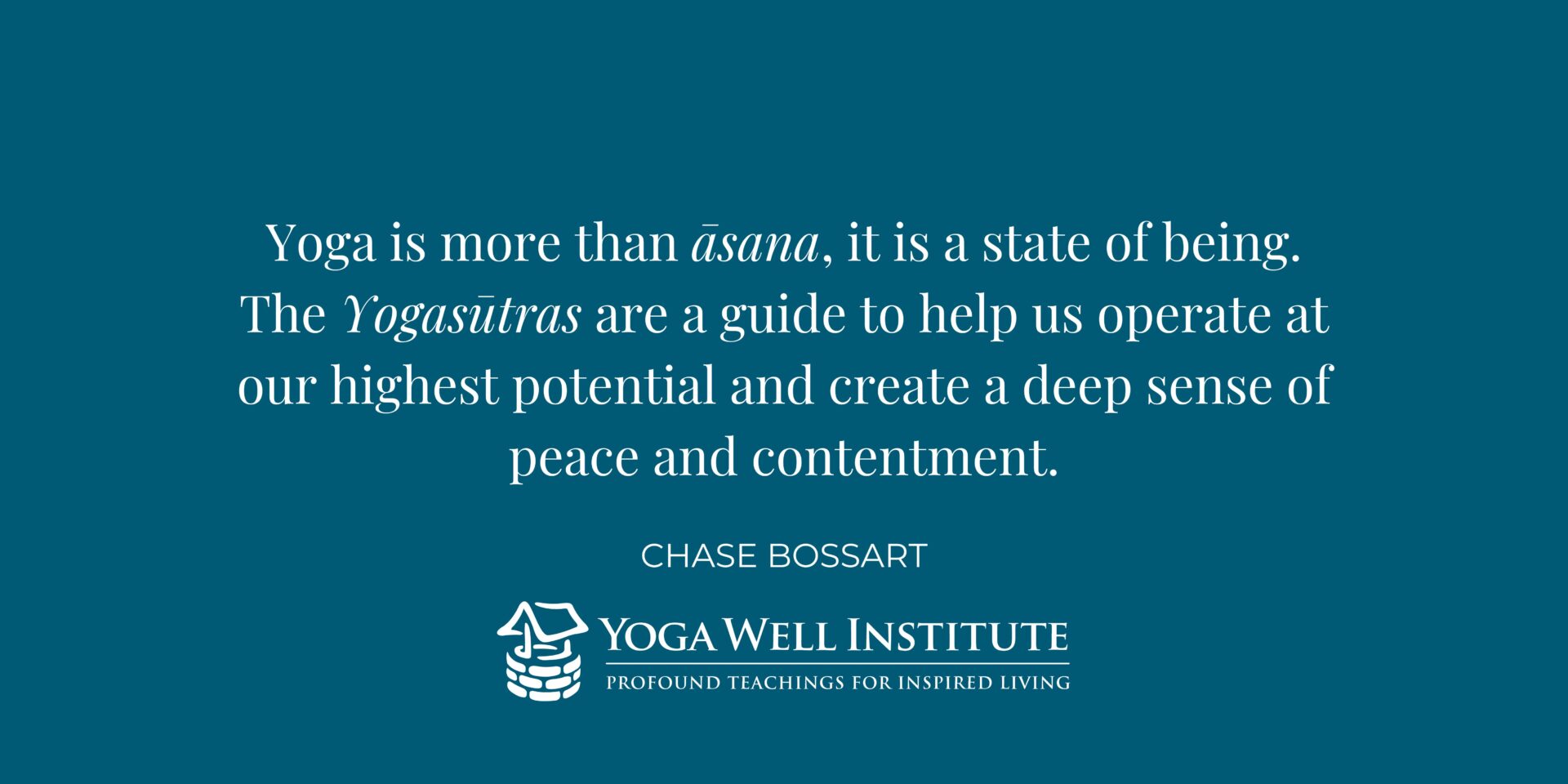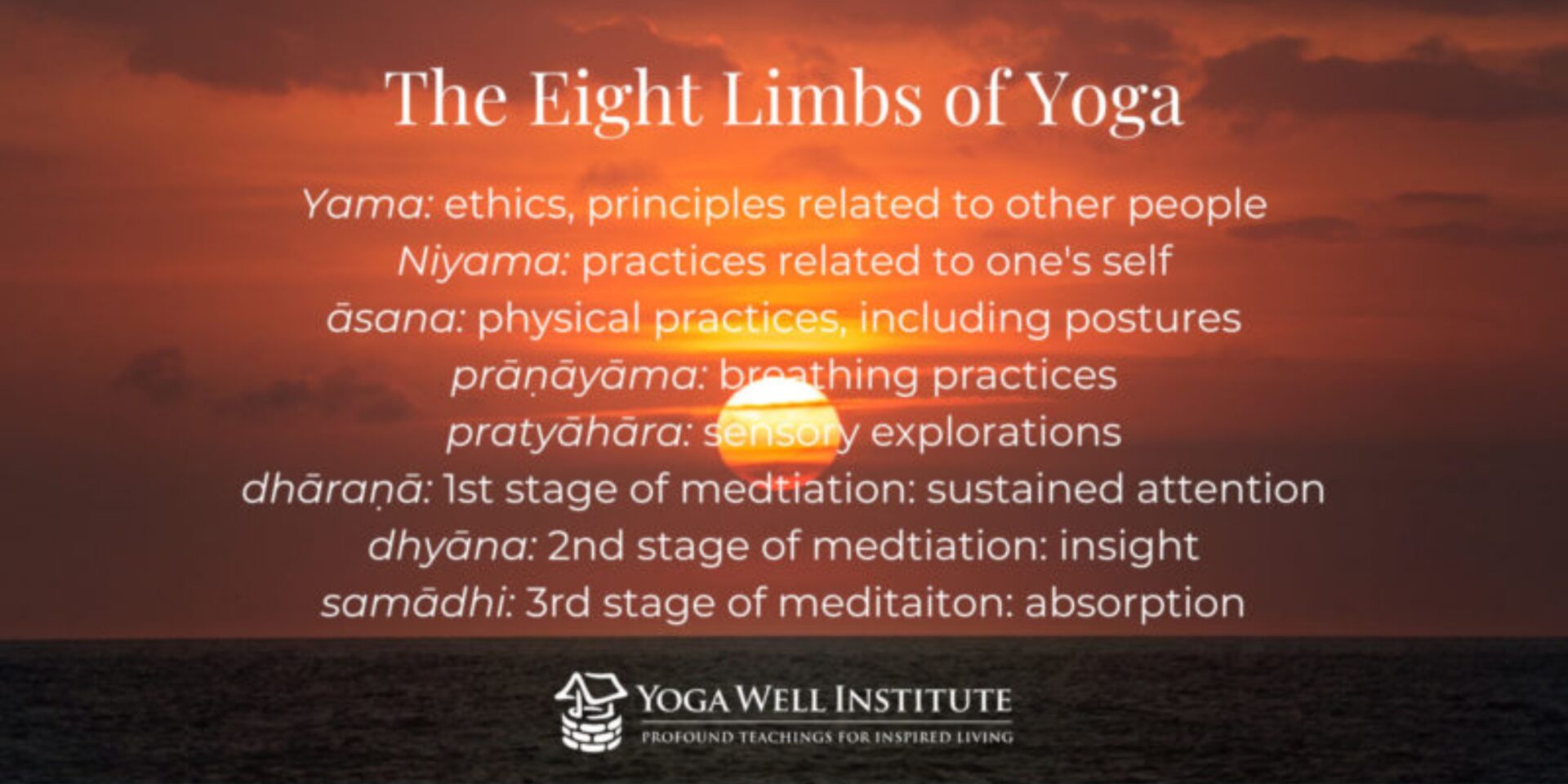A Guide for Everyday Life
What is Patañjali’s Yogasūtra?
Patañjali’s Yogasūtra is one of the most important texts on the practice of Yoga. Think of it as an instruction manual for living a satisfying and meaningful life. Patañjali’s Yogasūtra presents the principles of Yoga and outcomes that may be achieved through regular Yoga practice. However, its main purpose is to provide instructions for developing the state of Yoga and maintaining it in your life.
The Yogasūtra as a Curriculum (Not a Textbook)
The Yogasūtra was composed in Sanskrit in India approximately 1700 years ago, and is only 195 sentences long! It’s written in the sūtra style which aims for concision. Patañjali does not describe in detail how to do postures, breathing techniques, or even meditation. Rather, he lays out the principles underlying all practices and leaves the details to be taught by the teacher. As a result, the Yogasūtra text functions more like a curriculum than a textbook.

How Everyone Can Benefit from the Yogasūtra
Studying Patañjali’s Yogasūtra will do more than just deepen your practice or understanding of Yoga. It will give you context for your practice, illuminating concepts including:
- The definition of Yoga, its purpose and results. Hint: Sustained attention leads to clarity and authenticity.
- Descriptions of meditation, its process and effect on your entire system: body, breath, mind, behavior and emotions.
- Kriyāyoga – How Yoga is practiced in and through the actions of daily living and relationships
- In-depth overview of the entire process of Yoga
-
Aṣṭāṅgayoga – the Eight Limbs of Yoga
- yama – ethical principles for improving relationships
- niyama – practical attitudes for relating to oneself
- āsana – intentional movements/positions of the body
- prāṇāyāma – conscious breathing exercises
- pratyāhāra – sensory exercises
- dhāraṇā – initial step of meditation: directing one’s attention toward to chosen focus, concept, etc.
- dhyāna – experience of meditation: continuous attention accompanied by insight
-
samādhi – deep meditation

Embracing this ancient text will touch every part of your life and bring about many shifts along the way. It will reduce your suffering, increase your feelings of satisfaction and wellness, and improve your presence and patience. It is that powerful and applicable to your everyday life.
Yoga is a State of Being, defined by the Yogasūtra
Yoga is an optimal state of being in which the body, mind, and emotions operate to their highest potential and we feel a deep sense of peace and contentment. As Patañjali describes in the yogasūtras, this state expresses itself in many different ways. The practices detailed in Patañjali’s Yogasūtra are an opportunity to cultivate that state consistently.
Every posture, breathing technique, or meditation focus generates an experience. These experiences change how we feel, think, and act. Therefore, we can say that Yoga is a science of intentional experiences. And the Yogasūtras explain how to use our experiences to refine our state of being in order to create a deep sense of peace and contentment in our practice, and in our everyday life.
Ready to learn more? Download our free ebook "Understanding Patañjali’s Yogasūtras"
Looking for more?
To hear more fresh perspectives on what Yoga is, how it transforms the body and mind, and liberates your life tune into the Yoga Well Podcast! Within the Yoga Well Podcast we will share teachings from the Viniyoga lineage of Mr. TKV Desikachar, while exploring Yoga as a way of being that is practiced both on the mat and in our everyday life.




